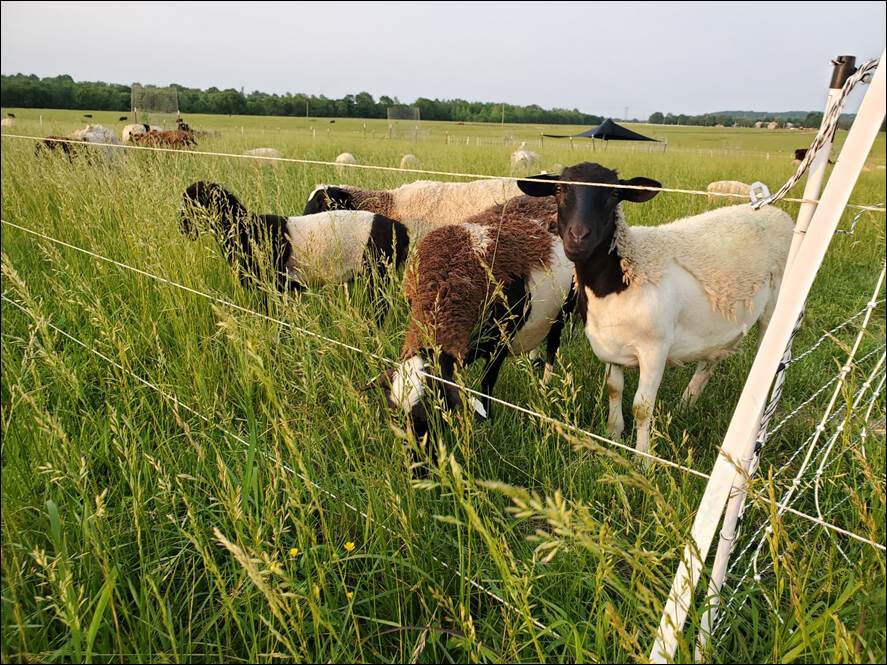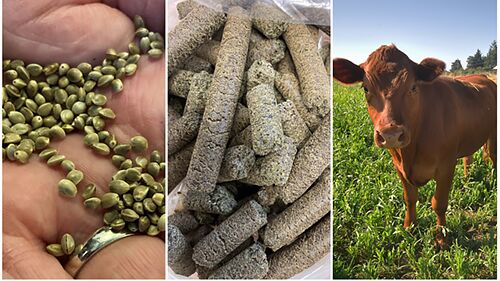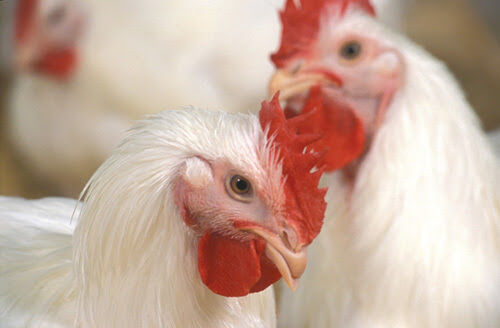Red clover extract improved food intake of sheep on toxic tall fescue

Research conducted by the Arkansas Agricultural Experiment Station using a red clover extract in feed shows promise in offsetting some of the adverse effects of tall fescue toxicosis in livestock, a problem with an estimated $1 billion impact in decreased production.
Many pastures in Arkansas and around the country are planted in Kentucky 31 tall fescue. A toxic endophyte fungus that infects the grass causes constriction of blood vessels in mammals. Decreased food intake is a side effect of what’s called “tall fescue toxicosis.”
Ken Coffey, animal science professor with the Arkansas Agricultural Experiment Station, noted that reduction in feedintake is one of the symptoms of tall fescue toxicosis and a major driver in reduced animal performance, which can mean fewer cow calves born and lower weaning weights. Coffey said he has seen milk production in ewes drop when exposed to the toxin to the point their lambs die from starvation.
Studies have shown that across the Tall Fescue Belt, where Kentucky-31 fescue predominantly grows, tall fescue toxicosis has led to a 30% reduction in calf births and a 70-pound reduction in weaning weights, Coffey said.
Effects of red clover
An Arkansas Agricultural Experiment Station study has shown a small amount of red clover extract helped offset the effects of tall fescue toxicosis in sheep. But too much red clover extract also decreased feed intake. Coffey expects the impact to be similar in cattle.
"Clover has estrogenic compounds, and over the years, we’ve seen some positive things with estrogenic compounds," Coffey said. "If you can get clover to grow in your pasture, that’s great, but many people can’t keep the clovers, so we used an extract as a supplement in the feed for the study."
How the research was conducted
Researchers offered Dorper lambs one of five diets of bermudagrass hay supplemented with tall fescue seed for the study. In addition to a positive control of non-toxic fescue seed, researchers offered lambs diets with toxic fescue seed with no red clover extract or toxic fescue with 0.33, 0.67, or 1% of the diet as red clover extract.
In the 2022 experiment station study, lambs offered toxic fescue ate 36% less than those offered the non-toxic diet. However, lambs on toxic fescue with 0.33% red clover extract consumed 15% more overall and 6% more digestible organic matter than those provided with toxic fescue without the red clover extract.
Coffey said digestible forage consumed directly relates to animal performance.
But there can be too much of a good thing. Greater concentrations of red clover extract led to less food intake among lambs.
"The proper dose of red clover extract is still not a complete solution, like so many other things that have been tried, but it does offer hope of offsetting a sizeable portion of the toxicity," Coffey’s said.
More research is needed
Coffey said that while the study’s results are promising, more research is needed to evaluate different red clover extract sources and better define estrogenic compound concentrations. He would also like to see more evaluations of grazing and delivery methods of the red clover extract to ruminants and study the impact of feeding red clover leaves at low levels to sheep or cattle on toxic fescue.
"Research on this issue has been conducted over the past 70 years without the discovery of a complete solution to the problem, indicating its complexity," Coffey wrote in a study impact statement. "Dilution of tall fescue pastures with clovers has been recommended for many years now, but clovers are difficult to maintain in many tall fescue pastures because of the thin, drought-prone soils that much of the toxic fescue thrives in."
The study was conducted on sheep instead of cattle at the experiment station to decrease expense, improve accuracy and shorten the study timetable. As ruminants, sheep and cattle have many physiological similarities that allow research material to translate across species.
Coffey noted that fescue toxicosis mitigation tactics are something to do whenever an animal is on tall fescue because the toxicity and impacts are variable throughout the year.
"If they’re on fescue and the forage is toxic, it costs performance. It’s just a matter of how much," Coffey said.
Coincidentally, Coffey’s research has shown that tall fescue toxicity rises at a critical season between mid-May and mid-June when ranchers reintroduce bulls to the herd for breeding in a spring calving operation. Coffey said that seeds in affected plants are five times more toxic than the leaves. He said that tall fescue’s concentrations of ergot alkaloids, the toxic compounds in endophyte fungus, also peak in the fall.
Coffey noted that some tall fescue varieties have a non-toxic endophyte and are safer for ruminants to eat.
Brittni Littlejohn, assistant professor of animal science for the experiment station, has conducted studies testing melatonin to offset tall fescue toxicosis. Her research showed that pregnant cows consuming toxic fescue seed have decreased uterine artery blood flow, potentially reducing nutrient supply to bovine fetuses during gestation.
On average, calves in Littlejohn’s study were about 90 pounds underweight at weaning. The low weight level continued as the calves grew, and the differences were maintained through the yearling stage. She was able to recover over 70 percent of the loss in weaning weight by treating pregnant heifers with melatonin.



